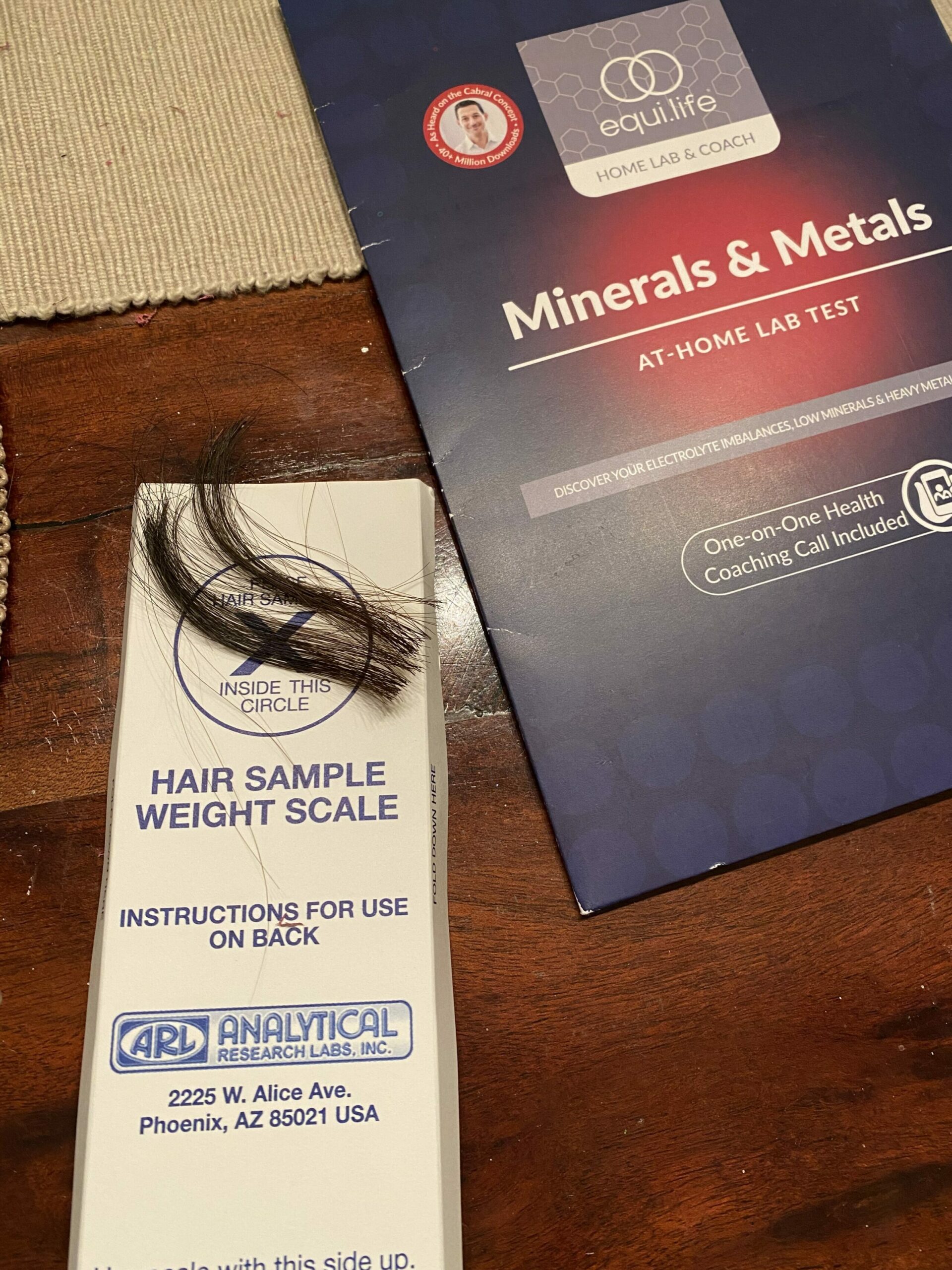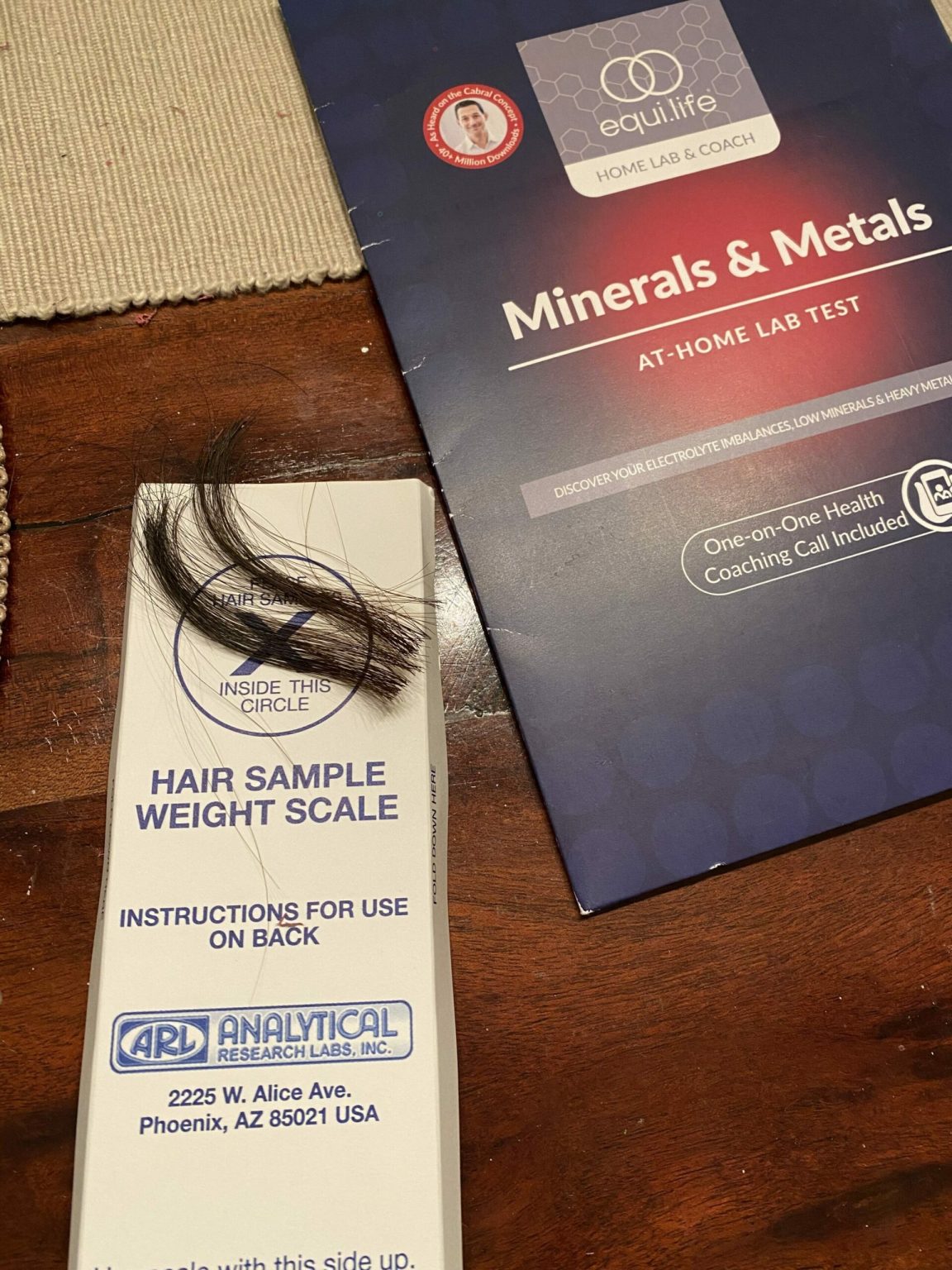I share my experiences with hair tissue mineral analysis and my results.
Hello friends! How are you doing? I hope you're enjoying your day so far. There's administrative stuff today, plus strength training at home and breakfast for dinner tonight.
In today's post I wanted to share my experience with HTMA as one of the testing tools I use. I shared more about my food sensitivity test here and will write another post about my candida, metabolism and vitamin test. It has been truly incredible to gain insight into imbalances caused by mineral deficiencies, particularly in the context of the eye and autoimmune diseases I have experienced over the last year.
At first glance, HTMA seems like a *simple* hair test, but there is so much to it and SO much it can tell you. It's a snapshot of how your body reacts to stress. When we're stressed, we burn through our minerals faster, which can leave us exhausted and exhausted, unable to defend ourselves against the toxins we're regularly exposed to. This can also be a very helpful tool after birth as babies need nutrients from the mother. Since the minerals work in pairs, it is important to examine the ratios and relationships between the minerals and try to find a balance. There will never be a *perfect* HTMA test result; It's more about noticing improvements in your body over time.

Embarking on a journey to understand your body's unique needs and intricacies is an important step toward holistic wellness. Today I'm going to share with you what this test involves, what benefits it offers, how it works, and my personal experiences.
Note: This information is based on personal experience and training. For individual advice, contact a doctor. This test does not diagnose, prevent, treat or cure any disease. It is simply an information tool for your unique body.
Hair Tissue Mineral Analysis Test Review
What is HTMA and what can it tell you?
HTMA is a diagnostic tool that analyzes the mineral levels in your hair tissue. Because our hair reflects our body's mineral composition, this non-invasive test provides insight into the past 90 days of mineral imbalances, heavy metal exposure and potential nutrient deficiencies. Although it is not intended to diagnose specific ailments, it goes beyond superficial symptoms and can help uncover the root causes of various health problems. Minerals are vital for our entire body and are the “spark plugs”.
Advantages and Benefits:
HTMA provides a holistic view of your mineral status, helping to identify imbalances or excesses that may contribute to health problems and complements traditional medical advice. It can also provide insight into your nervous system, adrenal function, thyroid function and absorption. Of course, things that help our bodies regulate better often also have the benefit of improving our mental health, which could even help combat depression.
Early detection: Early detection of mineral imbalances allows for proactive adjustments to prevent potential health problems
Tailored Nutrition: Using HTMA's insights, personalized nutritional plans can be created to address specific deficiencies and promote overall wellness.
Disadvantages:
External contamination: External factors such as hair products or environmental influences can influence test results. Choosing a reputable lab and following pre-testing guidelines can address these concerns.
How to take the test:
Buy the kit: Choose a trusted HTMA provider and order your kit. (I work with customers with pure test packages and as part of 1:1 coaching.)
Collect a hair sample: Follow the kit instructions to collect a hair sample from the back of your head, closest to your scalp. You don't need a lot of hair; it's about a tablespoon. The test kit comes with a paper scale to ensure you have enough.
Send to Laboratory: Send the sample to the specified laboratory for analysis.
This is my test – I did a full breakdown of the results on IG.


Who can benefit from HTMA?
Chronic health problems:
Individuals with ongoing health issues may benefit from uncovering underlying mineral imbalances.
Athletes:
Optimizing mineral levels is critical for athletes looking to improve their performance and recovery.
Preventative health:
Proactively addressing potential imbalances can potentially prevent future health problems.


The breakdown of the HTMA results:
HTMA results provide a comprehensive breakdown of various minerals and heavy metals in your body. The most important minerals include magnesium, calcium, potassium, sodium and trace elements such as zinc and copper. Elevated or depleted levels of these minerals can indicate potential health problems.
Understanding Mineral Imbalances:
Magnesium: A deficiency can lead to muscle cramps, anxiety and fatigue.
Calcium: Elevated levels can affect cardiovascular health and bone density.
Zinc: A crucial mineral for immune function; A deficiency can affect wound healing and the immune system.
Copper: Imbalances can affect energy levels and contribute to hormonal issues.
Interpretation of heavy metal contamination:
HTMA also assesses exposure to heavy metals such as lead, mercury, aluminum and cadmium. Elevated levels may indicate environmental exposure or impaired detoxification pathways.
Hair tissue mineral analysis (HTMA) classifies individuals into different metabolic types based on their oxidation rate. This rate, commonly referred to as metabolic type, divides people into fast oxidizers, slow oxidizers, or mixed oxidizers.
Here is a very brief overview of each:
Fast oxidizers:
Metabolic properties: Fast oxidizers have a fast oxidation rate, meaning their bodies process nutrients quickly.
Common features: They may experience bursts of energy followed by fatigue, have difficulty maintaining weight, and often have cravings for sweets.
Nutritional recommendations: Fast oxidizers may benefit from a diet rich in complex carbohydrates, moderate proteins, and healthy fats to stabilize blood sugar levels.
Slow oxidizers:
Metabolic properties: Slow oxidizers have a slower oxidation rate, meaning their body metabolizes nutrients more slowly.
Common features: You may struggle with low energy, weight gain, and cravings for stimulants like caffeine.
Nutritional recommendations: Slow oxidizers may benefit from a diet that emphasizes lean proteins, complex carbohydrates, and moderate healthy fats to support sustained energy levels. Mixed oxidants:
Metabolic properties:
Mixed oxidants exhibit both fast and slow oxidant properties and exhibit a balance between fast and slow metabolic rates.
Common features: They may experience a combination of symptoms from fast and slow oxidants, making their nutritional needs somewhat more nuanced.
Nutritional recommendations: Mixed oxidizers benefit from a balanced diet that includes elements from both the fast and slow oxidizer dietary recommendations.
My personal experience:
Through the HTMA I gained valuable insights into my mineral status. The test identified opportunities for improvement and led me to targeted dietary changes and nutritional supplements. Although HTMA is not a standalone solution, it serves as a powerful tool for me on my journey to holistic health. (My food sensitivity tests, hormonal imbalance tests, and OAT were also extremely informative!)
If you are interested in functional testing, please email me at gina@fitnessista.com with the subject TEST
It makes a big difference to take supplements that your body needs rather than ones you think you *should* take (which can even have negative effects). New 1:1 customers who sign up with a 3-month package will receive a free HTMA and Candida, Metabolism and Minerals test (valued at $499).
I wish you a wonderful day and see you soon!
xoxo
Gina
Success! Check your email for a free 30-day meal and fitness cheat sheet


